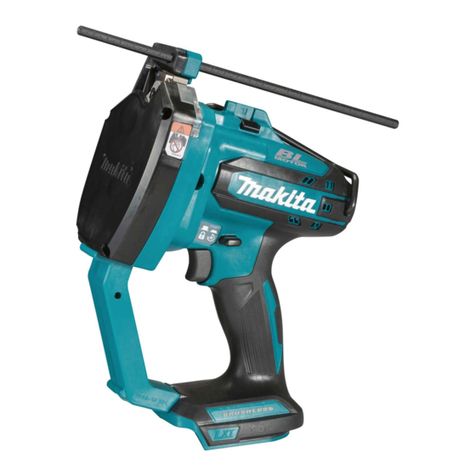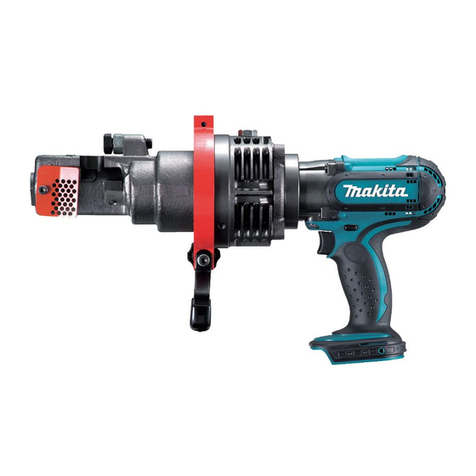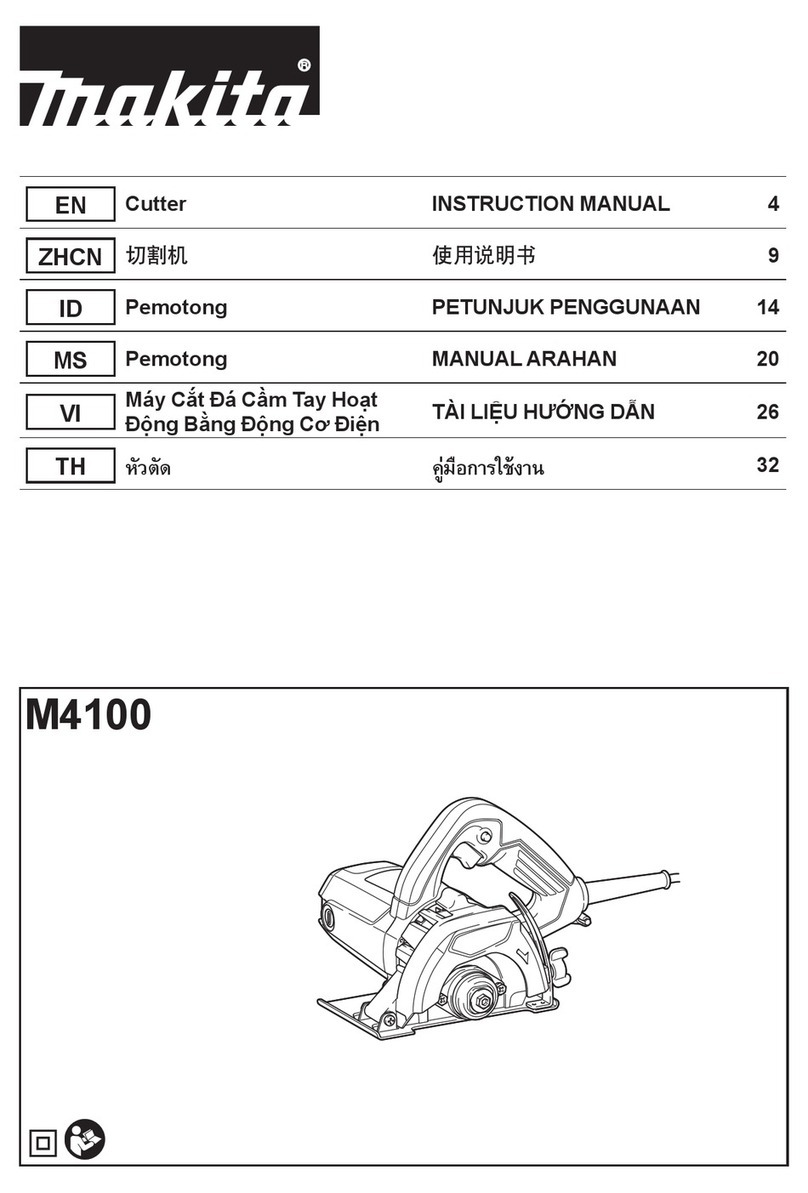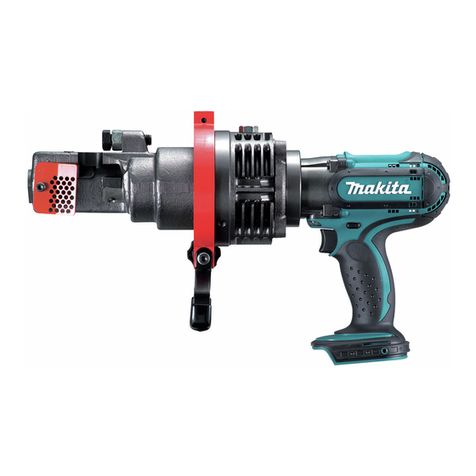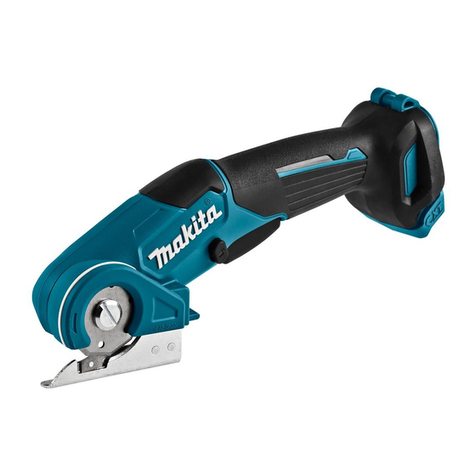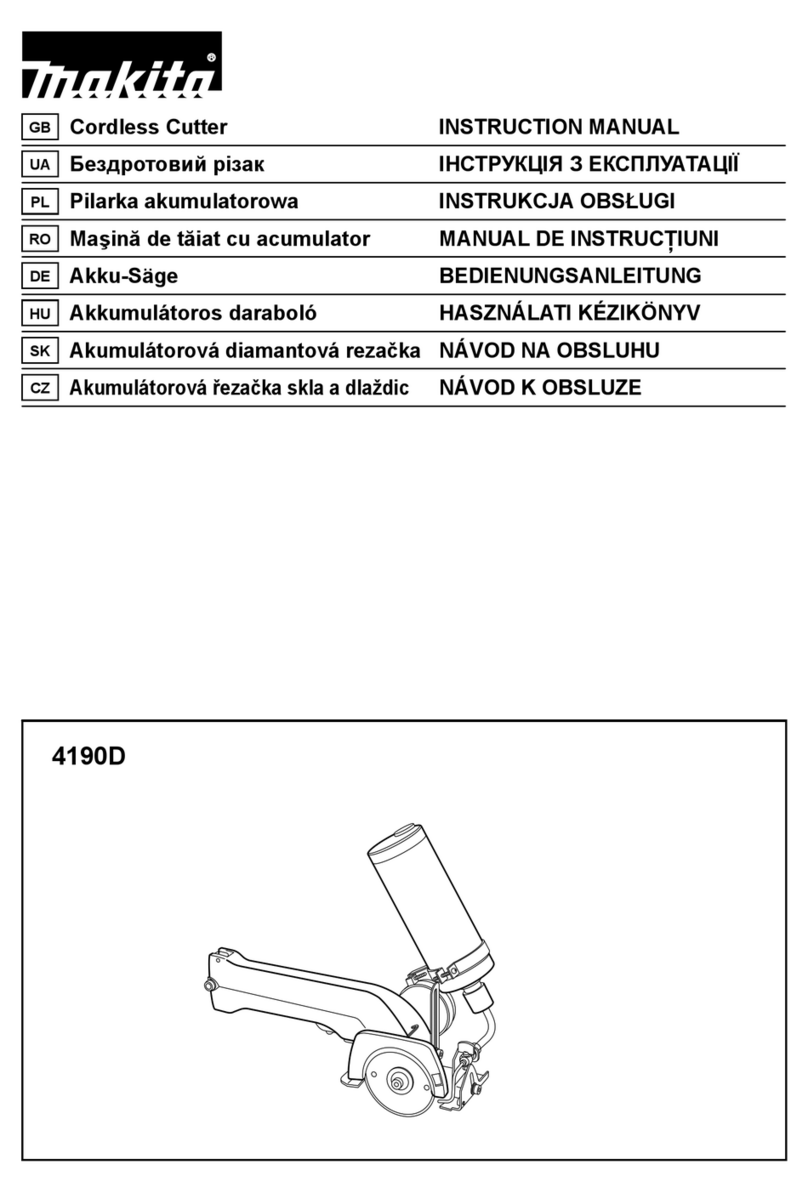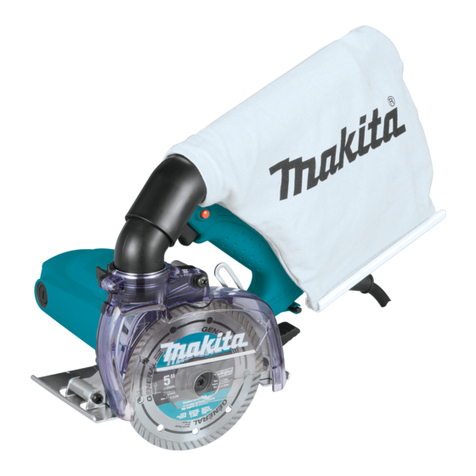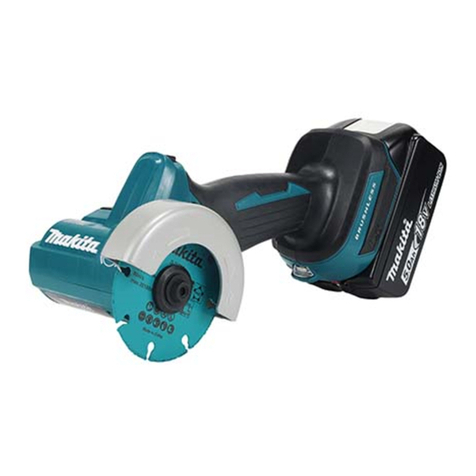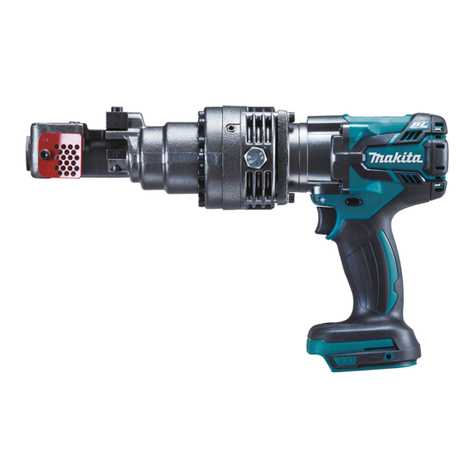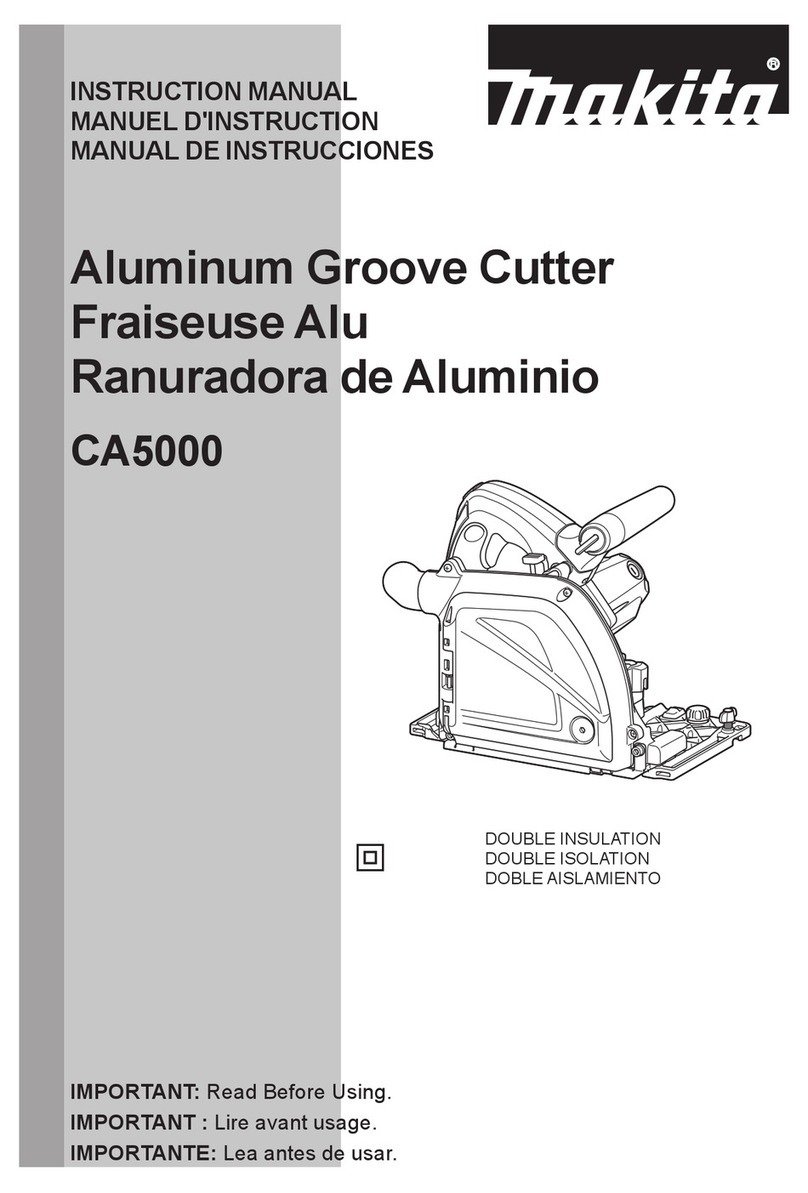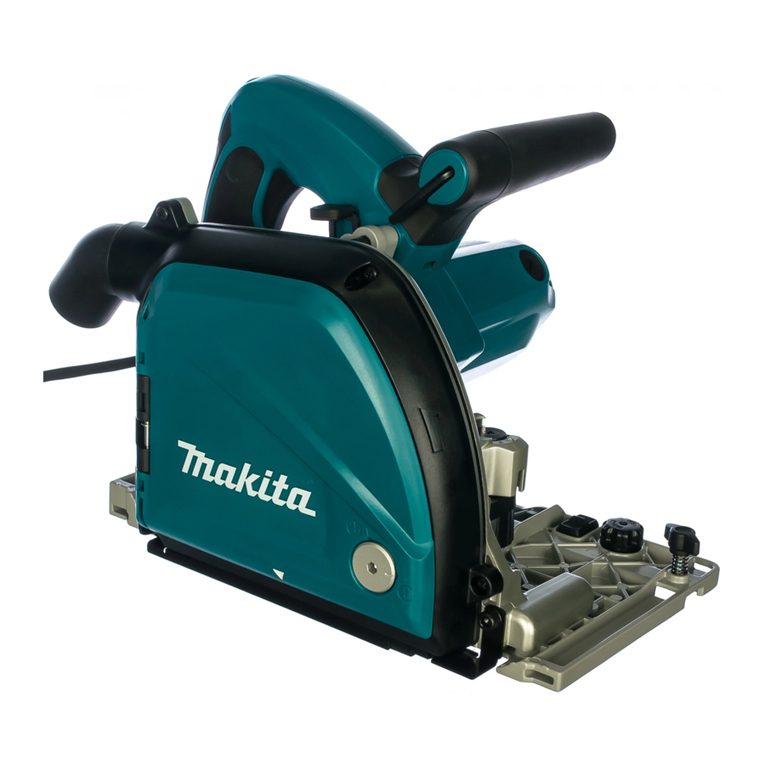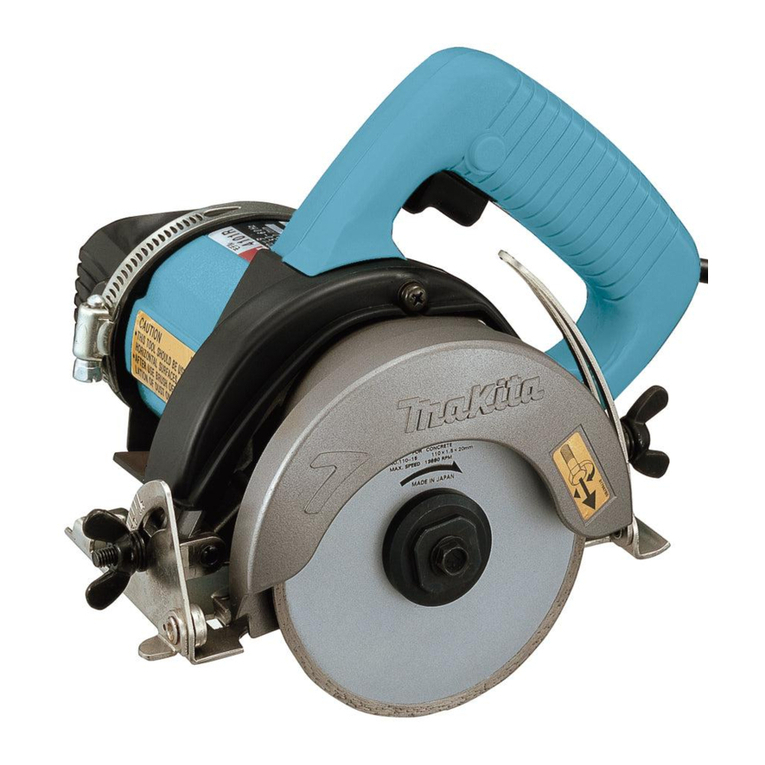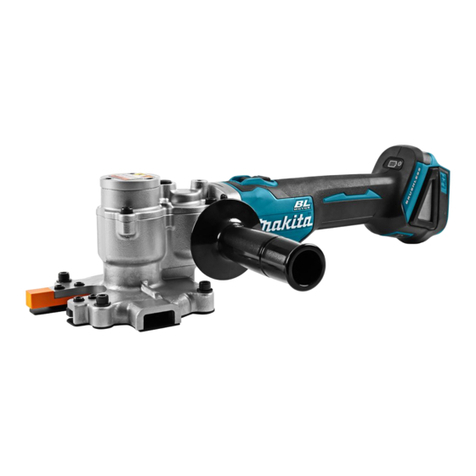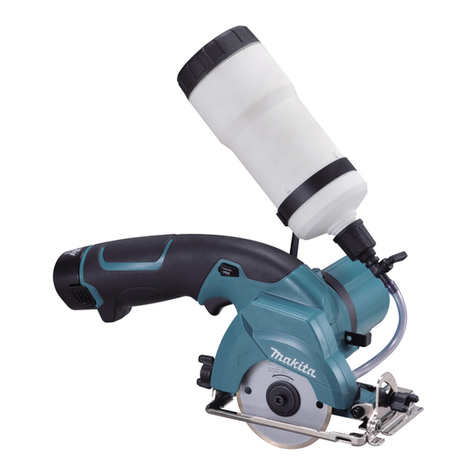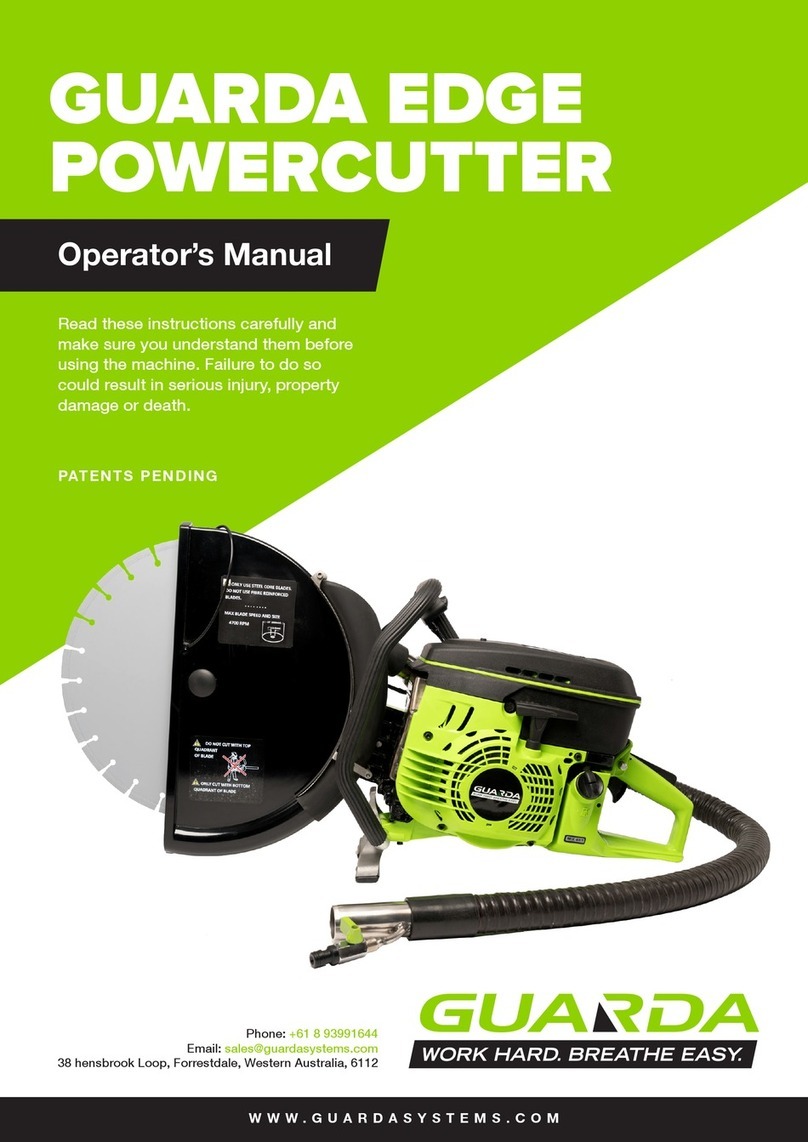Specific Safety Rules
1.
DANGER! Keep hands away from cutting area and blade. Keep your second
handonauxiliary handle, or motorhousing. If bothhands are holdingthe saw,
they cannot be cut by the blade.
Keep your body positionedtoeither side of the saw blade, but not
in
line with
the saw blade. KICKBACK could cause the saw to jump backwards. (See
"Causes and Operator Prevention of Kickback")
Do notreachunderneaththe work. Don't remove to remove cut material when
blade is moving.
CAUTION: Blades coast after turn off.
2.
NEVER hold piece being cut
in
your hands or across your leg. It is important
tosupport the work properlyto minimize body exposure, blade binding, or
loss
of control.
3.
Holdtool by insulatedgripping surfaces when performingan operation where
the cutting tool may contact hidden wiring or its own cord. Contact
with
a
"live" wire
will
also make exposed metal parts
of
the tool "live" and shock
the operator.
4.
When rippingalways usea ripfence or straight edge guide. This improves the
accuracy of cut and reduces the chance for blade binding.
5.
Always useblades withcorrectsize andshape (diamondvs. round) arbor holes.
Blades
that
do not matchthe mounting hardware of the saw will runeccentri-
cally, causing
loss
of control.
6.
Never use damaged or incorrect blade washers or bolts. The blade washers
and bolt were specially designed for your saw, for optimum performance and
safety or operation.
Kickback is a sudden reaction to a pinched, bound or misaligned saw blade,
causing an uncontrolled saw to lift up and out of the workpiece toward the
operator.
Whenthe blade is pinched
or
bound tightly by the kerf closing down, the blade
stalls and the motor reaction drives the unit rapidly back toward the operator.
If the blade becomes twisted or misaligned in the cut, the teeth at the back
edge of the blade candig into the top surface of the material being cutcausing
the blade to climb out of the kerf and jump back toward operator.
Kickback
is
the result of tool misuse and/or incorrect operating procedures or
conditions and can be avoided by taking proper precautions as given below.
Maintain a firm grip with both hands onthe saw and position your body and
arm to allow you to resist KICKBACK forces. KICKBACK forces can be
controlled by the operator, if proper precautions are taken.
When blade is binding, or when interrupting a cutfor any reason, release the
trigger and hold the saw motionless in the material untilthe blade comes to
a complete stop. Never attempt to remove the saw from the work or
pull
the saw backward while the blade is
in
motion or KICKBACK may occur.
7.
Causes and Operator Prevention of Kickback:
4

